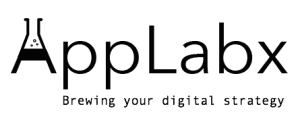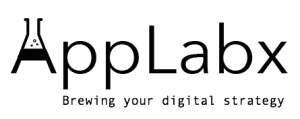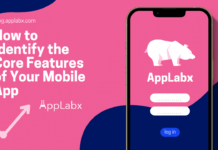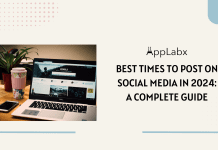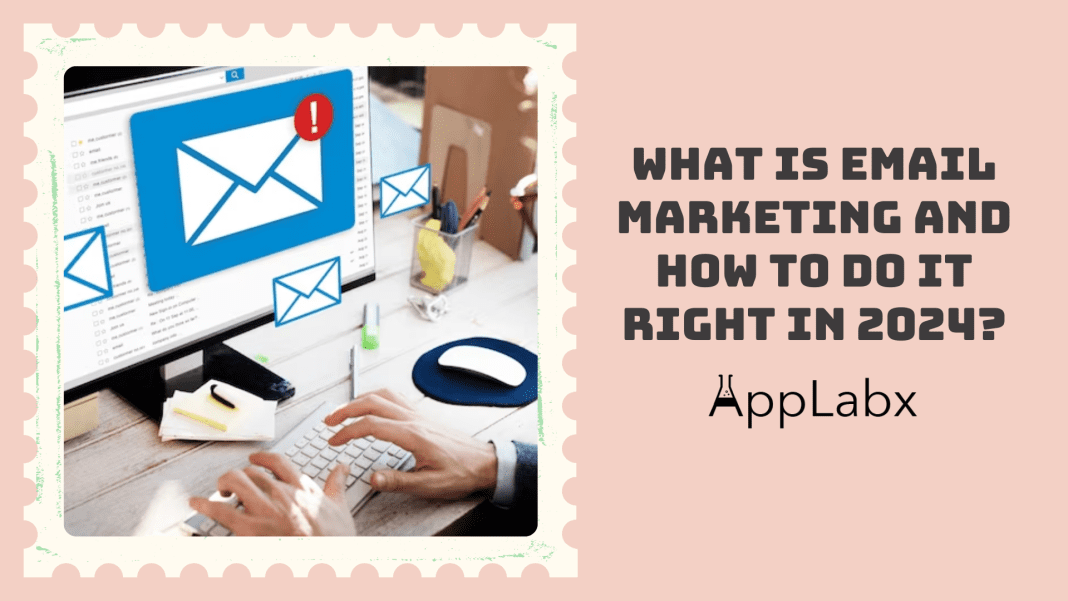Key Takeaways
- Strategic Personalization is Paramount: In 2024, email marketing transcends generic approaches. Harness the power of AI-driven personalization to craft messages that resonate individually, fostering stronger connections with your audience.
- Data-Driven Decision-Making Fuels Success: Elevate your campaigns with a data-centric approach. From open rates to compliance metrics, leverage analytics and insights to refine strategies, ensuring every email aligns with user behavior and preferences.
- Embrace Future Trends for Lasting Impact: Stay ahead of the curve by integrating innovations like interactive content, voice technology, and real-time responsiveness.
In 2024, email marketing isn’t just a tool—it’s an evolving narrative shaped by sustainability, accessibility, and cutting-edge technologies.
Welcome to the ever-evolving realm of digital marketing, where strategies, trends, and technologies are in a perpetual state of flux.
As we step into 2024, the significance of one stalwart in the marketing landscape remains unwavering: Email Marketing.
In this comprehensive guide, we delve into the intricate tapestry of “What is Email Marketing and How to Do It Right in 2024?” offering you insights, strategies, and a roadmap for success in an era defined by dynamic consumer behavior and technological innovation.
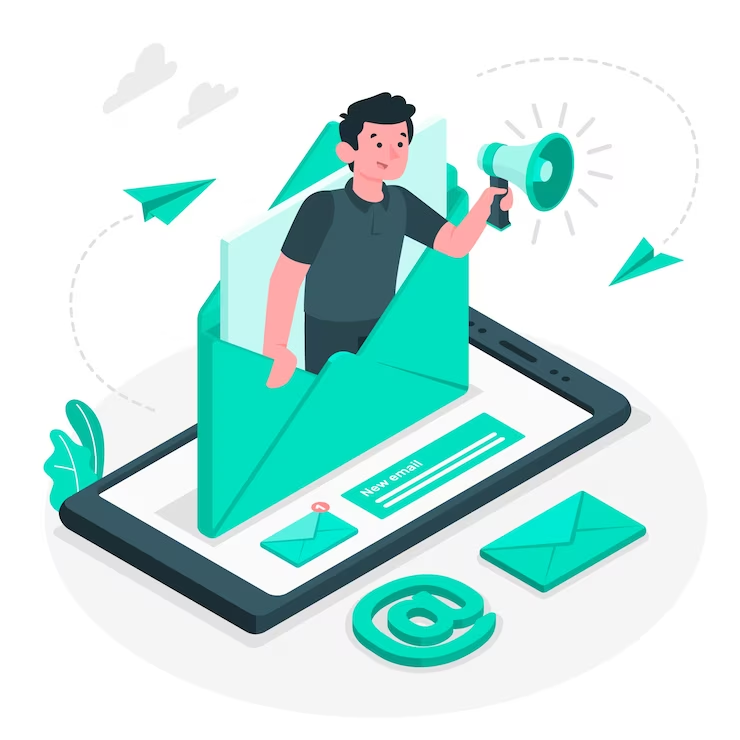
The Evolution of Email Marketing: From Pioneering Roots to Contemporary Significance
Email marketing has traversed a fascinating journey since its inception.
What began as a humble tool for communication has metamorphosed into a dynamic powerhouse for businesses to connect, engage, and convert leads into loyal customers.
As we navigate the digital terrain of 2024, understanding the roots of email marketing becomes pivotal to harnessing its full potential.
Why Email Marketing Matters More Than Ever in 2024
In an era where social media, influencer marketing, and emerging technologies dominate conversations, the question arises: Why does email marketing still hold its ground?
Unbeknownst to some, email marketing isn’t just a relic of the past; it’s a strategic linchpin in the present and future of digital marketing.
Join us as we unravel the intricacies of why email marketing matters more than ever in 2024, exploring its symbiotic relationship with contemporary consumer behavior and the broader marketing landscape.
Navigating the Digital Landscape: Multi-Channel Strategies and Email Marketing Integration
In an age defined by multi-channel marketing, the integration of email marketing into a cohesive strategy is paramount.
We explore the synergies between email marketing and other digital channels, providing actionable insights on how businesses can navigate this complex landscape to maximize reach, engagement, and conversion rates.
From social media to content marketing, we unveil the interconnected web that propels businesses to new heights in 2024.
The Anatomy of a Successful Email Marketing Strategy
Embarking on a successful email marketing journey requires more than just crafting compelling content and hitting the “send” button.
It demands a strategic approach encompassing audience segmentation, goal setting, and content personalization.
In this segment, we break down the essential components of a successful email marketing strategy, equipping you with the knowledge to not just send emails, but to send the right emails to the right audience at the right time.
Tools and Technologies Shaping Email Marketing in 2024
As technology continues its relentless march forward, the email marketing landscape evolves in tandem.
From established platforms to cutting-edge technologies, we provide an exhaustive overview of the tools and technologies shaping email marketing in 2024.
Automation, artificial intelligence, and data analytics take centre stage as we explore how these innovations redefine the efficiency and effectiveness of your email campaigns.
But, before we venture further, we like to share who we are and what we do.
About AppLabx
From developing a solid marketing plan to creating compelling content, optimizing for search engines, leveraging social media, and utilizing paid advertising, AppLabx offers a comprehensive suite of digital marketing services designed to drive growth and profitability for your business.
AppLabx is well known for helping companies and startups use email marketing to drive web traffic to their websites and web apps.
At AppLabx, we understand that no two businesses are alike. That’s why we take a personalized approach to every project, working closely with our clients to understand their unique needs and goals, and developing customized strategies to help them achieve success.
If you need a digital consultation, then send in an inquiry here.
What is Email Marketing and How to Do It Right in 2024?
- The Fundamentals of Email Marketing
- Why Email Marketing Matters in 2024
- Building an Effective Email Marketing Strategy
- Tools and Technologies for Email Marketing in 2024
- Best Practices for Email Marketing Success
- Metrics and Analytics in Email Marketing
- Future Trends in Email Marketing
1. The Fundamentals of Email Marketing
In the expansive domain of digital marketing, understanding the fundamentals of email marketing is essential for crafting campaigns that resonate with audiences.
Let’s delve into the core components that make email marketing not just a tool but a strategic powerhouse.
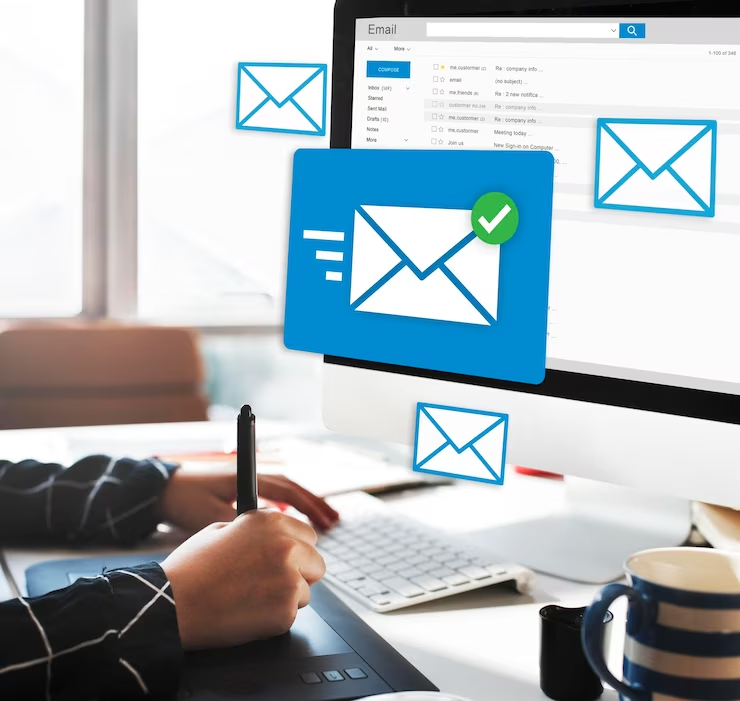
Definition and Purpose
Email marketing is the strategic use of emails to connect with an audience, promote products or services, and foster relationships.
It has evolved into a sophisticated blend of art and science, leveraging data-driven insights to deliver personalized and relevant content to the right audience.
Example: Consider the email campaigns of e-commerce giant Amazon. By analyzing customer behaviour, Amazon tailors its email recommendations, suggesting products based on previous purchases, browsing history, and preferences.
This personalized approach enhances user engagement and drives sales.
Evolution of Email Marketing
Understanding the evolution of email marketing provides valuable insights into its enduring efficacy.
From plain text messages to visually rich, interactive content, email marketing has adapted to the changing preferences of users.
Example: In the early 2000s, email marketing primarily consisted of plain text and basic HTML. Today, brands leverage interactive elements like GIFs, videos, and dynamic content to create engaging and visually appealing emails.
This evolution reflects the necessity to capture the attention of modern, visually-oriented consumers.
Key Components of a Successful Email Marketing Strategy
Building a Quality Email List
A robust email marketing strategy begins with a high-quality email list. A focused and well-segmented list ensures that your messages reach the right audience, increasing the likelihood of engagement and conversions.
Example: HubSpot’s email marketing tools enable businesses to segment their audience based on various criteria such as behavior, demographics, and interactions. This segmentation ensures that each email campaign is tailored to specific audience segments.
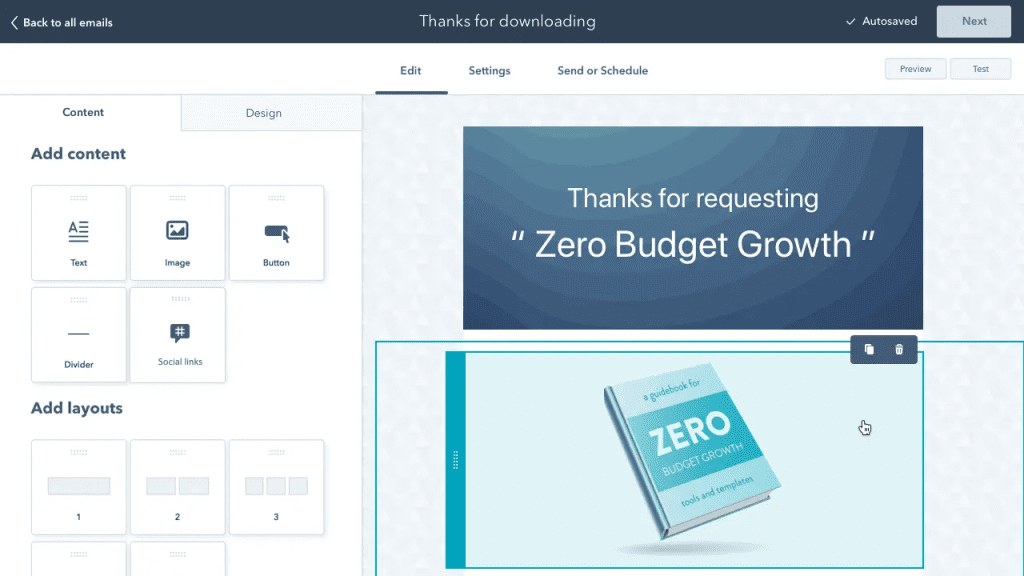
Compelling Content Creation
Content is the heart of any email campaign.
Crafting compelling, relevant, and valuable content ensures that your emails resonate with recipients, prompting them to take desired actions.
Example: Dollar Shave Club’s witty and humorous email content stands out. Their emails not only showcase their products but also entertain, creating a memorable brand experience for subscribers.
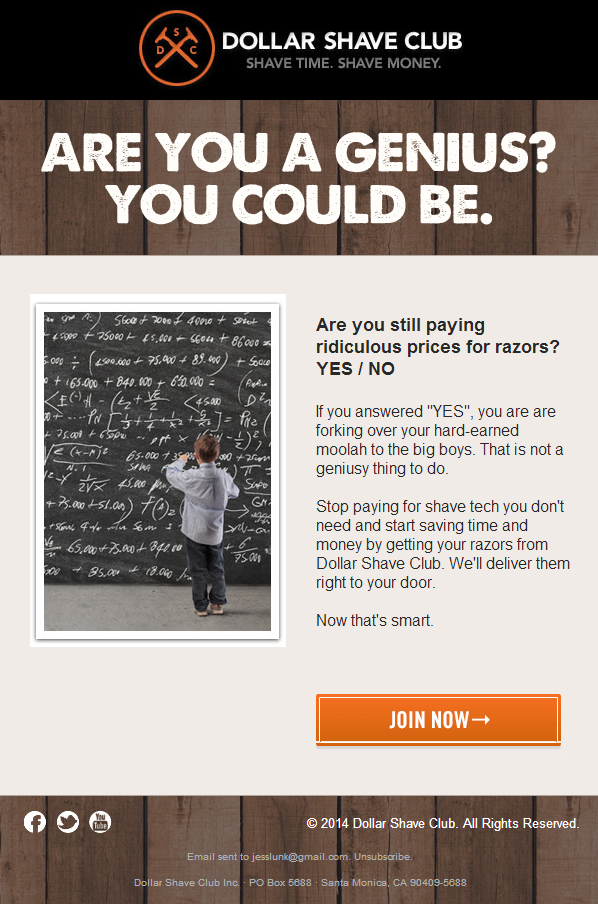
Strategic Timing and Frequency
The timing and frequency of your emails play a crucial role in engagement.
Understanding the optimal times to send emails and finding the right balance in frequency prevents subscriber fatigue and enhances overall campaign effectiveness.
Example: According to a report, emails sent on Tuesdays and Thursdays had the highest open rates. This insight emphasizes the importance of strategic timing in email marketing.
Personalization for Improved Engagement
Personalization goes beyond addressing recipients by their names. It involves tailoring content based on user preferences, behaviors, and demographics, creating a more personalized and relevant experience.
Example: Netflix excels in personalization by sending recommendations based on a user’s viewing history. This approach enhances user engagement and retention by delivering content tailored to individual tastes.
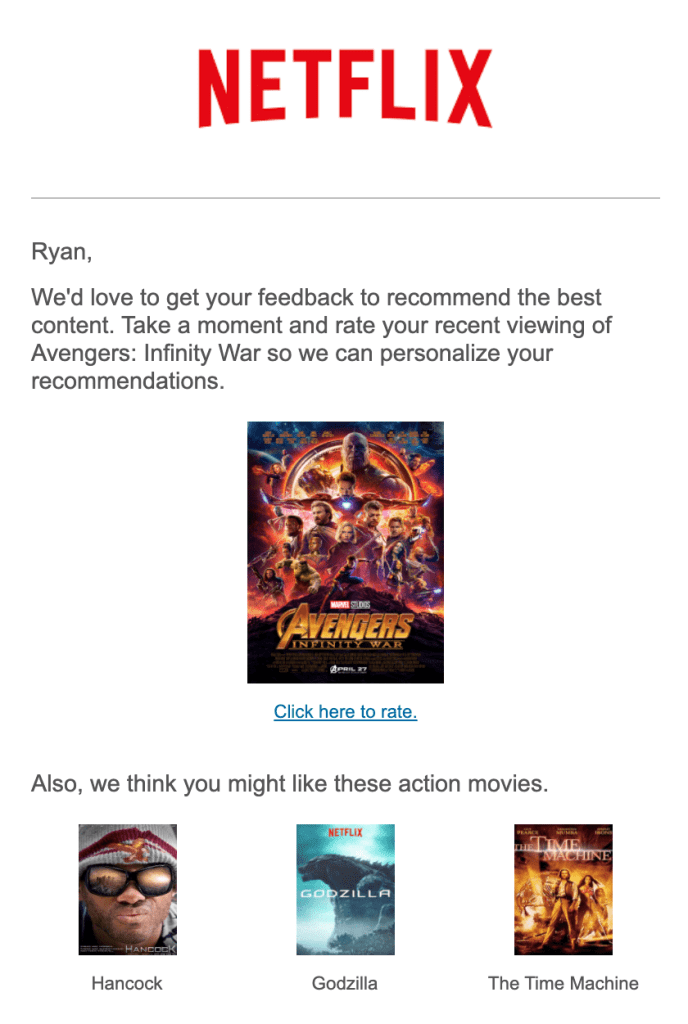
Clear Call-to-Action (CTA)
A well-defined CTA guides recipients on the desired action, whether it’s making a purchase, downloading content, or subscribing to a newsletter. A clear and compelling CTA enhances the effectiveness of your email campaigns.
Example: Airbnb’s emails often include visually striking CTAs prompting users to explore unique stays or discover experiences. The clarity and visual appeal of their CTAs contribute to higher click-through rates.
Responsive Design for Mobile Optimization
With a significant portion of emails being opened on mobile devices, ensuring responsive design is imperative. Mobile-optimized emails guarantee a seamless user experience across devices.
Example: 55% of emails are opened on mobile devices. Brands like Starbucks optimize their emails for mobile, ensuring that users can easily engage with content, regardless of the device.
2. Why Email Marketing Matters in 2024
In the expansive realm of digital marketing, the enduring relevance of email marketing emerges as a strategic linchpin for businesses seeking effective communication, engagement, and conversion in 2024.
Let’s delve into the compelling reasons why email marketing remains a pivotal force in the marketing mix.
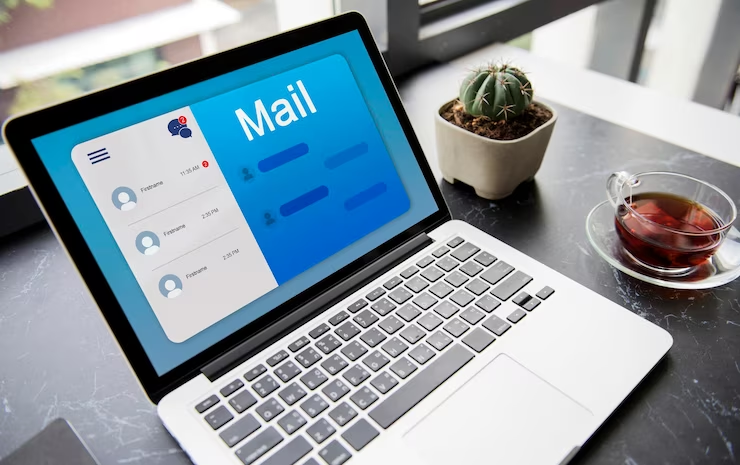
Current Trends in Digital Marketing
In a dynamic digital ecosystem, email marketing stands out amidst emerging trends.
As of 2024, several key trends underscore the enduring importance of email marketing:
Integration with Omnichannel Strategies
Many successful brands, including Nike and Sephora, seamlessly integrate email marketing into their omnichannel strategies. Email serves as a connector, providing personalized experiences that complement users’ interactions across various touchpoints.
Rise of Personalization and Automation
Brands like Spotify leverage personalization by curating playlists based on user preferences, fostering a sense of individualized connection.
Interactive Email Experiences
Interactive emails, featuring elements like surveys, quizzes, and product carousels, enhance engagement.
Brands such as IKEA use interactive elements to showcase diverse furniture arrangements, transforming the email into an immersive experience.
The Role of Email Marketing in a Multi-Channel Strategy
In an era defined by diverse communication channels, email marketing emerges as a unifying force, connecting businesses with their audience across platforms.
Complementing Social Media Initiatives
Social media platforms amplify brand visibility, and email marketing complements these efforts by fostering deeper connections. Brands like Glossier use email to share exclusive content, driving social media followers to engage more intimately through email subscriptions.
Building Trust and Loyalty
Brands like Starbucks leverage email to deliver personalized offers and loyalty rewards, solidifying customer relationships.
Enhanced Customer Journeys with Email Sequences
Email sequences, such as welcome series and abandoned cart reminders, contribute to a seamless customer journey. E-commerce giant Amazon excels in this by sending personalized follow-up emails and nudging customers to complete their purchases.
Benefits and Advantages for Businesses in 2024
Cost-Effectiveness and High ROI
The average ROI through email marketing is $36 for every $1 spent. This cost-effectiveness positions email marketing as a lucrative channel for businesses of all sizes.
Data-Driven Decision Making
Advanced analytics tools enable businesses to glean actionable insights from email campaigns. Mailchimp, for instance, provides detailed analytics, allowing businesses to refine their strategies based on open rates, click-through rates, and subscriber behavior.
Global Reach and Accessibility
Email transcends geographical boundaries, enabling businesses to reach a global audience with ease.
In 2022, the number of global e-mail users amounted to 4.26 billion and is set to grow to 4.73 billion users in 2026, presenting an unparalleled opportunity for businesses to expand their reach.
Email Marketing in the Context of Evolving Consumer Behavior
Preference for Permission-Based Communication
Consumers increasingly value permission-based communication. According to a study, 91 per cent of US adults like to receive promotional emails from companies they do business with, highlighting the importance of consent in email marketing.
Mobile-Centric Interaction
With the majority of email opens occurring on mobile devices, brands optimize their emails for mobile responsiveness.
Increasing Emphasis on Privacy and Data Security
Heightened concerns about data privacy have led to the implementation of stringent regulations like GDPR. Email marketing platforms, including Constant Contact, prioritize data security and compliance, aligning with evolving consumer expectations.
3. Building an Effective Email Marketing Strategy
Crafting an effective email marketing strategy is akin to architecting a bridge between your brand and your audience.
In this comprehensive guide, we explore the key components that contribute to a successful email marketing strategy.
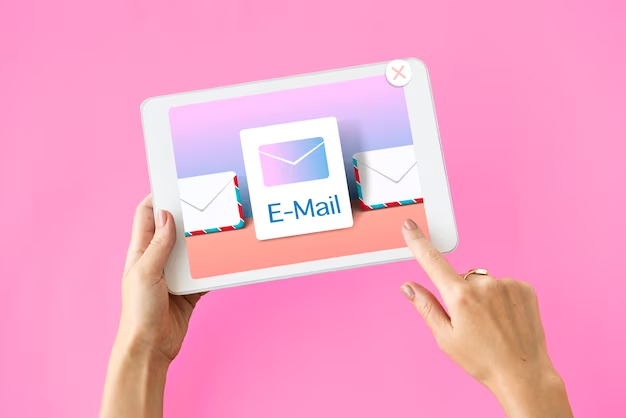
Identifying Your Target Audience
Understanding your audience is the cornerstone of any successful email marketing strategy.
Precise audience segmentation enables you to tailor content, leading to higher engagement and conversion rates.
Data-Driven Segmentation Practices
Utilize customer data to segment your audience effectively. According to a study, 74% of marketers state that targeted personalization increases customer engagement.
Example: Airbnb strategically segments its audience based on travel preferences, ensuring that users receive personalized recommendations for accommodations and experiences.
Behavioral Segmentation for Personalization
Leverage user behaviour data for granular segmentation. A report found that 72% of consumers say they only engage with personalized messaging.
Example: Amazon’s email strategy excels in behavioural segmentation, delivering product recommendations based on users’ browsing and purchase history.
Setting Clear and Measurable Goals
Establishing clear and measurable goals provides a roadmap for your email marketing efforts.
These goals align with broader business objectives and serve as benchmarks for success.
SMART Goal Setting
Adopt the SMART criteria (Specific, Measurable, Achievable, Relevant, Time-bound) for goal-setting.
Example: A fitness app might set a goal of increasing email sign-ups by 20% in the next quarter, providing a clear and measurable target.
Aligning Email Goals with Business Objectives
Ensure that email marketing goals align with broader business objectives.
HubSpot reports that sales and marketing alignment can help your company become 67% better at closing deals.
Example: A software company aiming to increase product adoption might set an email goal focused on providing valuable educational content to users.
Creating Engaging and Relevant Content
Compelling content is the lifeblood of effective email marketing. Crafting emails that resonate with your audience ensures higher open rates and encourages interaction.
Personalized Content Strategies
Implement personalization strategies in content creation.
Example: Spotify’s personalized playlists and recommendations based on user preferences demonstrate effective content personalization.
Visual Appeal and Consistent Branding
Invest in visually appealing designs and maintain consistent branding across emails. According to a study, on average, consistency increases revenue by 23%.
Example: Apple’s email campaigns are known for their visually stunning design and consistent brand aesthetic, contributing to a memorable user experience.
Automation and AI in Email Campaigns
Leveraging automation and artificial intelligence (AI) enhances the efficiency and effectiveness of email campaigns, enabling personalized and timely communication.
Email Automation for Workflow Efficiency
Implement automation for tasks like welcome emails, abandoned cart reminders, and drip campaigns. According to a report, 63% of companies outsource all or part of marketing automation strategy planning.
Example: E-commerce platform Shopify employs automated email sequences to recover abandoned carts, reminding users to complete their purchases.
AI-Powered Personalization
Harness AI for predictive analytics and content personalization. A study found that personalization can deliver five to eight times the ROI on marketing spend.
Example: Netflix employs AI algorithms to analyze user viewing habits and deliver personalized recommendations, showcasing the power of AI in content personalization.
Optimizing Email Design for Mobile Devices
With a significant portion of emails opened on mobile devices, optimizing email design for mobile responsiveness is non-negotiable for success.
Mobile-Friendly Design Principles
Prioritize a responsive design that adapts seamlessly to various screen sizes.
Example: Starbucks ensures its emails are mobile-friendly, allowing users to easily engage with promotions and offers on their smartphones.
User-Friendly Navigation on Mobile
Simplify navigation and ensure a user-friendly experience on mobile.
Example: The clothing retailer Zara employs a mobile-friendly design that simplifies navigation and enhances the overall mobile user experience.
4. Tools and Technologies for Email Marketing in 2024
Navigating the intricacies of email marketing in 2024 involves harnessing cutting-edge tools and technologies that empower marketers to create, automate, and optimize campaigns.
In this comprehensive guide, we explore the latest tools and technologies shaping the email marketing landscape.

Overview of Popular Email Marketing Platforms
Mailchimp: All-in-One Marketing Platform
With over 14 million users, Mailchimp continues to be a leader in email marketing. Its comprehensive suite includes features like audience management, campaign creation, and analytics.
Example: Businesses like TheSkimm utilize Mailchimp for its user-friendly interface and advanced segmentation capabilities, enabling personalized communication with their diverse audience.
Constant Contact: Simple and Effective Email Marketing
Constant Contact is renowned for its simplicity and effectiveness. It offers features such as customizable templates, social media integration, and robust analytics.
Example: Local businesses, such as restaurants and retail stores, leverage Constant Contact to engage with their customer base through targeted email campaigns.
HubSpot: Integrated Marketing Automation
HubSpot provides an all-in-one solution with marketing automation, CRM, and sales tools. Its robust automation capabilities streamline workflows and nurture leads effectively.
Example: HubSpot’s platform is favoured by B2B companies like SalesLoft for its seamless integration of marketing and sales processes, enhancing lead management and conversion rates.
Emerging Technologies in Email Marketing
Artificial Intelligence (AI) and Predictive Analytics
AI is revolutionizing email marketing by offering predictive analytics for personalized content recommendations. 51% of marketers are already using AI, and 27% plan to adopt it in the next 2 years.
Example: Grammarly employs AI to analyze user behaviour and send targeted emails, enhancing user engagement and encouraging premium subscription upgrades.
Augmented Reality (AR) in Email Campaigns
The integration of AR in email campaigns adds an interactive and immersive dimension.
Example: Retailers like IKEA leverage AR in emails, allowing customers to visualize furniture in their homes before making a purchase.
Voice Technology Integration
Voice-activated devices are on the rise, influencing email marketing strategies. One-quarter of U.S. adults say they have a smart speaker in their home, so optimizing emails for voice search becomes crucial.
Example: Brands like Starbucks incorporate voice-activated calls-to-action in their emails, enabling users to place orders using voice commands through smart speakers.
Automation and AI in Email Campaigns
Marketing Automation Platforms
Marketing automation platforms streamline repetitive tasks, nurture leads, and facilitate personalized communication. According to Grand View Research, the global marketing automation market size is expected to reach USD 8.42 billion by 2027.
Example: Marketo, a leading marketing automation platform, is employed by enterprises like Adobe for its robust features, including lead scoring and behavioural tracking.
AI-Powered Personalization Tools
AI-driven personalization tools analyze data to deliver hyper-personalized content.
Example: Amazon’s email campaigns are driven by AI algorithms, ensuring that product recommendations align with individual user preferences.
Compliance and Security Tools
Email Compliance Platforms
Compliance platforms ensure adherence to regulations like GDPR and CAN-SPAM.
Example: TrustArc is a compliance platform used by businesses to navigate complex data privacy regulations and maintain email compliance.
Email Encryption Solutions
Email encryption is critical for protecting sensitive information. The Cybersecurity market worldwide is projected to show an annual growth rate (CAGR 2023-2028) of 10.48%, resulting in a market volume of US$273.60 billion by 2028.
Example: Virtru provides email encryption solutions that safeguard communications, ensuring secure transmission of confidential data.
5. Best Practices for Email Marketing Success
Mastering the art of email marketing requires a nuanced understanding of industry best practices.
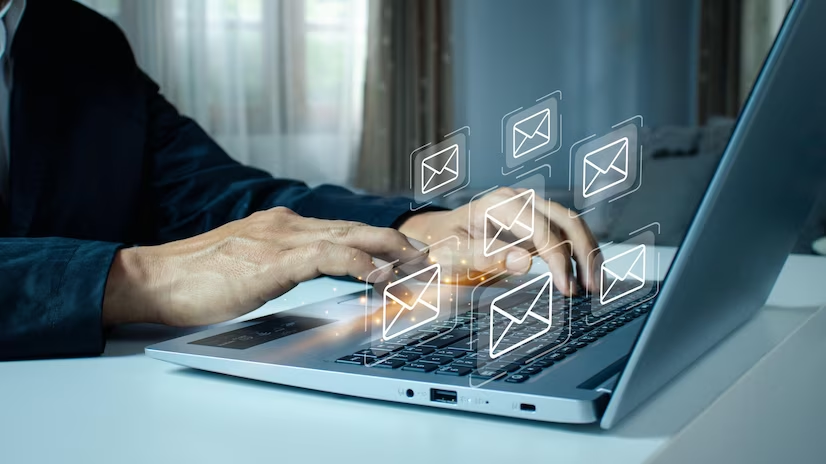
Crafting Compelling Subject Lines
Clarity and Conciseness
Keep subject lines clear and concise. Subject lines with 6 to 10 words generated approximately 21% open rate.
Example: Airbnb excels in concise subject lines, such as “Your next adventure awaits,” prompting users to open the email for personalized travel recommendations.
Personalization and Relevance
Incorporate personalization for relevance.
Example: Spotify’s subject lines often include the user’s name and reference their music preferences, creating a personalized and engaging experience.
Optimizing Email Content for Engagement
Segmentation and Personalization
Leverage audience segmentation and personalization for targeted content. Segmented email campaigns have an open rate that is 14.32% higher than non-segmented campaigns.
Example: Amazon tailors its email content based on customer behaviour, ensuring that recommendations align with individual preferences and purchase history.
Compelling Visuals and Design
Prioritize visually appealing designs.
Example: Apple’s email campaigns are renowned for their sleek and visually stunning design, creating a memorable brand experience for recipients.
Mobile Optimization
Optimize emails for mobile devices.
Example: Starbucks ensures its emails are mobile-friendly, enabling users to engage seamlessly with promotions and offers on their smartphones.
Timing and Frequency Considerations
Strategic Timing
Send emails at strategic times. The tried-and-true traditional approach of sending out email campaigns in the middle of the week and in the middle of the day tends to do pretty well.
Example: Clothing retailers often send promotional emails on Tuesdays, aligning with data suggesting higher open rates on this day.
Consistent Schedule
Maintain a consistent email schedule.
Example: Newsletters like TheSkimm send emails on a consistent schedule, fostering a habit among subscribers and ensuring regular engagement.
Effective Call-to-Action (CTA) Strategies
Clarity and Urgency
Craft clear and compelling CTAs with a sense of urgency. Emails with a single CTA receive 371% more clicks compared to those with multiple calls to action.
Example: Airbnb’s CTAs often convey urgency, such as “Book Now” or “Limited Availability,” prompting users to take immediate action.
Button Design and Placement
Optimize CTA button design and placement.
Example: E-commerce platforms like Shopify strategically place vibrant and visually appealing CTA buttons, enhancing user interaction.
Data-Driven Decision Making and Analytics
Email Analytics Platforms
Utilize email analytics platforms for data-driven insights.
Example: Google Analytics provides in-depth data on user behavior, allowing businesses to refine their email strategies based on actionable insights.
A/B Testing for Optimization
Implement A/B testing for continuous optimization.
Example: Optimizely is a popular A/B testing tool employed by businesses to test variations of subject lines, content, and calls-to-action.
Compliance and Deliverability
Adherence to Regulations
Ensure compliance with email marketing regulations like GDPR and CAN-SPAM. Non-compliance can result in significant fines and damage to reputation.
Example: TrustArc is a compliance platform trusted by businesses to navigate data privacy regulations and maintain email compliance.
Email Authentication Practices
Implement email authentication practices like DKIM and SPF.
Example: DMARC (Domain-based Message Authentication, Reporting, and Conformance) is widely adopted by organizations to prevent email spoofing and phishing attacks.
6. Metrics and Analytics in Email Marketing
Understanding the metrics and analytics associated with email marketing is crucial for gauging the effectiveness of campaigns and making informed decisions.
In this comprehensive guide, we delve into the key metrics, their significance, and how businesses can leverage analytics for continuous improvement.

Open Rate: Gauging Initial Engagement
Definition and Significance
The open rate is a fundamental metric, indicating the percentage of recipients who opened an email. It provides insights into the effectiveness of subject lines and overall campaign visibility. The average open rate for all industries we analyzed is 21.33%.
Example: A clothing retailer utilizing compelling subject lines and personalization may achieve an open rate above the industry average, indicating strong initial engagement.
Click-Through Rate (CTR): Measuring User Engagement
Definition and Significance
CTR measures the percentage of recipients who click on one or more links within an email. It indicates the level of engagement and interest in the content. The average click rate for all industries we looked at is 2.62%.
Example: An e-commerce brand incorporating clear and persuasive CTAs in its emails may experience a higher CTR, signifying effective content and engagement.
Conversion Rate: Assessing Campaign Effectiveness
Definition and Significance
The conversion rate reflects the percentage of email recipients who completed the desired action, such as making a purchase, filling out a form, or downloading content. On average, e-commerce conversion rates can be around 1.84%.
Example: An online service provider running a promotional email may analyze the conversion rate to evaluate the success of the campaign in driving sign-ups or subscriptions.
Bounce Rate: Identifying Delivery Issues
Definition and Significance
The bounce rate represents the percentage of emails that were not successfully delivered. High bounce rates may indicate issues with email addresses, deliverability, or content. The acceptable email bounce rate is still below 2% regardless of industry averages.
Example: A company sending a large volume of emails with outdated or incorrect email addresses may experience an elevated bounce rate, prompting a review of their contact list hygiene.
List Growth Rate: Evaluating Audience Expansion
Definition and Significance
The list growth rate measures the speed at which an email list is expanding. A healthy list growth rate is essential for maintaining a vibrant and engaged audience.
Example: A subscription-based business employing effective lead-generation tactics may experience a steady list growth rate, ensuring a constant influx of potential customers.
Unsubscribe Rate: Managing Subscriber Preferences
Definition and Significance
The unsubscribe rate indicates the percentage of recipients who opted out of receiving future emails. Monitoring this metric helps in understanding subscriber preferences and content relevance.
The average unsubscribe rate across all industries is around 0.27%.
Example: An educational institution sending newsletters may assess the unsubscribe rate to evaluate the content’s alignment with the interests of its audience.
Forward Rate and Social Shares: Assessing Content Virality
Definition and Significance
The forward rate measures the percentage of recipients who forward an email to others, while social shares indicate the number of times an email is shared on social media. These metrics reflect content virality.
Exact benchmarks for these metrics can vary but analyzing trends and increases over time is valuable.
Example: An entertainment company promoting a new release may encourage social sharing by incorporating shareable content and incentivizing users to spread the word.
Revenue per Email: Tying Metrics to Business Goals
Definition and Significance
Revenue per email is a crucial metric linking email marketing efforts to actual revenue generation. It calculates the average revenue generated from each email sent.
Example: An e-commerce brand may analyze revenue per email to assess the profitability of specific campaigns and optimize future strategies.
Email Client and Device Analytics: Optimizing User Experience
Definition and Significance
Understanding which email clients and devices recipients use provides insights into optimizing email designs for better user experience. Metrics may include open rates by device and email client.
Example: An online retailer noticing a significant portion of email opens on mobile devices may prioritize mobile-friendly designs to enhance the overall user experience.
Spam Complaint Rate: Maintaining Sender Reputation
Definition and Significance
The spam complaint rate measures the percentage of recipients who marked an email as spam. High spam complaint rates can harm the sender’s reputation and deliverability.
Example: A marketing agency may closely monitor spam complaint rates, adjusting email content and frequency to align with subscriber expectations and preferences.
Lifetime Value (LTV) of Email Subscribers: Assessing Long-Term Impact
Definition and Significance
LTV measures the total revenue generated by a customer throughout their relationship with a brand. Calculating LTV for email subscribers helps assess the long-term impact of email marketing efforts.
Example: A subscription-based service may analyze the LTV of email subscribers to gauge the effectiveness of email campaigns in fostering long-term customer relationships.
Click-to-Open Rate (CTOR): Evaluating Content Relevance
Definition and Significance
CTOR calculates the percentage of unique clicks compared to unique opens, offering insights into the relevance and effectiveness of the content within the email. As of 2023, the average CTOR across all industries is 11%.
Example: An online publication may analyze CTOR to determine the resonance of the content, adjusting future campaigns based on the observed engagement patterns.
Engagement Over Time: Optimizing Send Times
Definition and Significance
Analyzing engagement over time helps identify peak periods when subscribers are most active. Optimizing send times based on this data can improve open and click-through rates. The top five best times to send email are 10 a.m., 9 a.m., 8 a.m., 1 p.m., and 3 p.m.
Example: A global brand with an international audience may use engagement over time data to tailor email send times for maximum impact across different time zones.
Customer Segmentation Metrics: Tailoring Content
Definition and Significance
Metrics related to customer segmentation, such as engagement rates by segment, help in tailoring content for specific audience segments based on their preferences and behaviours.
Example: An e-learning platform may analyze engagement rates by segment to personalize course recommendations and content for diverse user groups.
Social Proof Metrics: Building Trust and Credibility
Definition and Significance
Metrics related to social proof, such as user-generated content sharing and testimonials, contribute to building trust and credibility. Analyzing the impact of social proof on engagement is crucial.
According to Nielsen, ninety-two per cent of consumers around the world say they trust earned media, such as word-of-mouth or recommendations from friends and family.
Example: An e-commerce brand may feature customer testimonials in their email campaigns, tracking metrics related to user-generated content sharing to measure the impact on audience trust.
Predictive Analytics and AI Metrics: Enhancing Personalization
Definition and Significance
Predictive analytics and AI-driven metrics enable the personalization of content based on user behaviour, preferences, and historical interactions, enhancing the overall relevance of emails.
Example: An online streaming service may leverage predictive analytics to recommend content, increasing user engagement by delivering personalized suggestions aligned with individual preferences.
Email Testing Metrics: Refining Strategies Through Experimentation
Definition and Significance
Metrics related to email testing, including A/B testing and multivariate testing, help in refining strategies through experimentation, and optimizing elements such as subject lines, content, and CTAs.
Example: An e-commerce platform may use A/B testing to experiment with different email subject lines, analyzing metrics to determine the most effective approach for future campaigns.
Geographic and Demographic Metrics: Tailoring to Audience Characteristics
Definition and Significance
Analyzing geographic and demographic metrics allows businesses to tailor email content based on the characteristics and preferences of specific audience segments.
Example: An international travel agency may use geographic metrics to customize promotional offers based on specific destinations, ensuring relevance for diverse customer segments.
Responsive Design Metrics: Enhancing Mobile User Experience
Definition and Significance
Metrics related to responsive design, including mobile open rates and click-through rates, ensure that emails are optimized for various devices, enhancing the overall user experience.
Example: An online retailer may prioritize responsive design, tracking metrics related to mobile user engagement to ensure a seamless experience for smartphone users.
Compliance Metrics: Safeguarding Reputation and Deliverability
Definition and Significance
Compliance metrics, including spam complaint rates and adherence to regulatory standards, are crucial for safeguarding the sender’s reputation and ensuring email deliverability. Non-compliance with regulations like GDPR can result in fines and damage brand reputation.
Example: A financial institution may closely monitor compliance metrics to adhere to industry regulations and build trust among subscribers regarding the security of their personal information.
Integration with Customer Relationship Management (CRM): Holistic Insights
Definition and Significance
Integrating email marketing metrics with CRM systems provides holistic insights into customer interactions across various touchpoints, enabling a comprehensive understanding of customer journeys.
Companies that used a CRM saw an increase in revenue per salesperson by 41%.
Example: An e-commerce brand may integrate email marketing metrics with its CRM system to analyze customer behaviour, optimize communications, and enhance overall customer experiences.
7. Future Trends in Email Marketing
As the digital landscape continues to evolve, the future of email marketing is marked by innovative trends that redefine engagement strategies and elevate user experiences.
In this in-depth exploration, we delve into the emerging trends set to shape the trajectory of email marketing in the coming years.
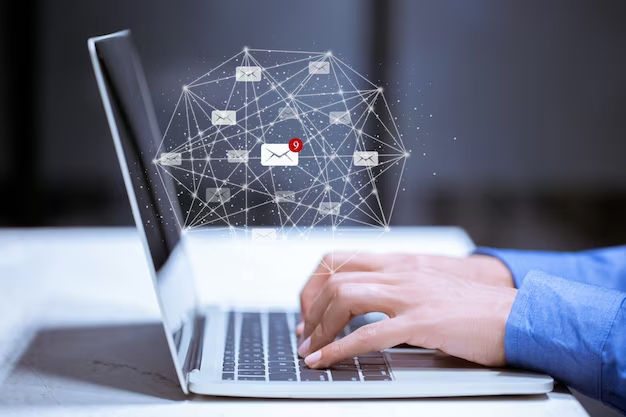
AI-Powered Personalization: Elevating User Experiences
Personalization at Scale
Artificial Intelligence (AI) is revolutionizing email marketing by enabling advanced personalization at scale. AI algorithms analyze user behaviour, preferences, and historical interactions to deliver hyper-personalized content.
Example: Amazon’s recommendation engine is a prime example of AI-driven personalization. By analyzing user purchase history and preferences, Amazon delivers highly personalized product recommendations in their email campaigns.
Interactive Email Experiences: Engaging Beyond Clicks
Integration of Interactive Elements
The future of email marketing embraces interactive elements such as quizzes, polls, and carousels within emails. These elements engage recipients directly within the email, providing a dynamic and immersive experience.
Example: Retail brands like IKEA have incorporated interactive elements in their emails, allowing recipients to engage with the content directly by exploring product variations or participating in quizzes.
Dark Mode Optimization: Adapting to User Preferences
Designing for Dark Mode
With the increasing adoption of dark mode across devices and email clients, optimizing email designs for dark mode enhances user experience and readability.
Litmus reports that dark mode is now supported by most major email clients, including Apple Mail, Gmail, and Outlook.
Example: Brands like Apple incorporate dark mode optimization in their email designs, ensuring that the content remains visually appealing and readable, regardless of the user’s device preferences.
Predictive Analytics for Email Marketing: Anticipating User Behavior
Harnessing Predictive Analytics
Predictive analytics leverages machine learning algorithms to anticipate user behavior and preferences. By analyzing historical data, marketers can send emails that align with individual user journeys.
Example: Music streaming services like Spotify utilize predictive analytics to anticipate user preferences, sending personalized playlists and recommendations based on listening habits.
Email Accessibility: Inclusivity in Design
Prioritizing Accessibility Standards
Accessibility in email design ensures that content is accessible to users with disabilities. Future trends emphasize adherence to accessibility standards, creating a more inclusive experience for all recipients.
According to the World Health Organization, an estimated 1.3 billion people experience significant disability. This represents 16% of the world’s population or 1 in 6 of us.
Example: Brands like Microsoft prioritize email accessibility by using accessible design elements, making content perceivable and usable for individuals with disabilities.
Visual Email Search: Streamlining User Engagement
Integration of Visual Search
Visual email search allows users to search for products or information directly within emails by using images. This streamlines the user journey and enhances the overall shopping experience.
Example: Retailers in the fashion industry integrate visual search in their emails, enabling users to find similar products by uploading images or clicking on visually similar items in the email.
Privacy-Centric Email Marketing: Navigating Regulatory Landscape
Adherence to Privacy Regulations
With increasing concerns about data privacy, future trends in email marketing focus on strict adherence to privacy regulations such as GDPR and CCPA. Building trust through transparent data practices is paramount.
TrustArc, a privacy compliance platform, assists businesses in navigating data privacy regulations and maintaining compliance.
Example: Businesses like Shopify communicate transparently about data usage and privacy in their email communications, fostering trust among their users.
Voice Integration in Emails: Capitalizing on Voice Technology
Optimizing for Voice Search
With the rise of voice-activated devices, email marketing trends anticipate the integration of voice technology in emails. Optimizing content for voice search and incorporating voice-activated commands in emails become essential.
Example: Brands like Starbucks incorporate voice-activated calls-to-action in their emails, allowing users to place orders using voice commands through smart speakers.
Sustainability in Email Marketing: Eco-Friendly Practices
Green Email Marketing Practices
Sustainable and eco-friendly practices in email marketing align with growing environmental consciousness. This includes reducing carbon footprints associated with email campaigns and promoting eco-friendly initiatives.
Two-thirds (66%) are willing to pay more for sustainable products.
Example: Companies committed to sustainability may incorporate eco-friendly messaging in their email campaigns, showcasing initiatives like reduced paper usage and carbon-neutral practices.
Real-Time Email Marketing: Timely and Relevant Communication
Leveraging Real-Time Data
Real-time email marketing involves using up-to-the-minute data to send timely and relevant messages. This trend ensures that emails are aligned with current events, user behaviours, and preferences.
Example: Travel companies may leverage real-time email marketing by sending last-minute deals based on user browsing behaviour or current travel trends.
Conclusion
In the ever-evolving landscape of digital marketing, the significance of email marketing remains unparalleled.
As we’ve navigated the depths of “What is Email Marketing and How to Do It Right in 2024?” it’s evident that email marketing is not just a tool; it’s a dynamic and strategic approach to connect with audiences, foster engagement, and drive tangible results.
The Power of Personalization and Relevance
In 2024, personalization emerges as the linchpin of successful email marketing strategies. Understanding your audience, and their preferences, and tailoring content that resonates with individuals on a personal level is no longer a choice but a necessity.
The era of generic, one-size-fits-all emails has given way to meticulously crafted messages that speak directly to the hearts and minds of recipients.
Data-Driven Decision Making
The heartbeat of effective email marketing in 2024 is the rhythmic pulse of data-driven decision-making. From analyzing open rates to fine-tuning CTAs based on click-through rates, every metric provides valuable insight.
The integration of advanced analytics platforms, AI-powered tools, and predictive analytics not only refines your strategies but propels your campaigns into a realm of unprecedented efficiency and relevance.
Navigating the Complexities of Compliance and Security
As we traverse the digital landscape, compliance with regulations such as GDPR and ensuring the utmost security of user data have become non-negotiable aspects of email marketing.
Tools and technologies dedicated to maintaining compliance and encrypting sensitive information are not just safeguards but pillars upon which trust and credibility are built.
Embracing Innovations: AI, AR, and Voice Integration
The horizon of 2024 sees email marketing not merely as a static form of communication but as a dynamic canvas that embraces innovations.
AI-driven personalization, augmented reality experiences, and voice technology integration are not futuristic concepts—they are today’s tools shaping tomorrow’s engagement.
Brands leveraging these technologies are not only staying ahead of the curve but are also crafting immersive experiences that captivate their audience.
Tools and Technologies: The Backbone of Efficiency
The arsenal of tools and technologies available in 2024 is nothing short of formidable.
From established platforms like Mailchimp and Constant Contact to emerging technologies such as AI-powered personalization tools, the array of options empowers marketers to streamline workflows, enhance segmentation, and deliver campaigns with surgical precision.
The marriage of automation, analytics, and intuitive design is the hallmark of successful email marketing strategies.
Looking Beyond: Future-Forward Strategies
As we bid adieu to this comprehensive exploration of email marketing in 2024, it’s crucial to look beyond the current landscape.
Future trends, including AI-powered personalization at scale, interactive email experiences, and the integration of voice technology, beckon marketers to stay agile and adaptive.
The principles of sustainability, accessibility, and real-time responsiveness are not mere trends but the cornerstones of a resilient and future-proof email marketing strategy.
If you are looking for a top-class digital marketer, then book a free consultation slot here.
If you find this article useful, why not share it with your friends and business partners, and also leave a nice comment below?
We, at the AppLabx Research Team, strive to bring the latest and most meaningful data, guides, and statistics to your doorstep.
To get access to top-quality guides, click over to the AppLabx Blog.
People also ask
What is the email trend in 2024?
In 2024, email marketing trends focus on hyper-personalization with AI, immersive experiences through interactive content, and the integration of voice technology. Compliance and security remain paramount, and sustainability emerges as a key focus, shaping a dynamic landscape for successful campaigns.
What is email marketing and how does it work?
Email marketing is a digital strategy where businesses send targeted messages to a group of recipients via email. It works by building and nurturing customer relationships, promoting products or services, and driving engagement through personalized and strategically timed emails.
What is the best way to start email marketing?
To start email marketing, define goals, build a quality email list, choose a reliable email marketing platform, and create compelling content. Craft engaging subject lines, use personalized elements and analyze data to refine strategies. Comply with regulations and prioritize subscriber preferences.
